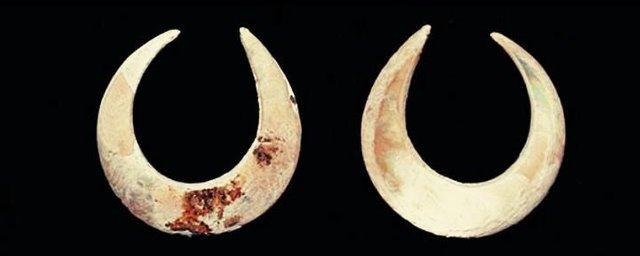Discovery in 12,000-Year-Old Grave Shows Not All Ancient Fishers Were Men

Archaeologists have unearthed the oldest fish hooks determined in a grave, and they are difficult the idea that most of the fishing paintings in the Indonesian region heaps of years ago become simplest done by means of guys.
dating back to the Pleistocene 12,000 years in the past, the hooks have been part of the grave goods of a burial on Indonesia's Alor Island, carefully arranged underneath the chin and across the jaw of the deceased - who the researchers assume was a girl.
they may be not the oldest fish hooks ever recovered - that honour goes to round rotating fish hooks located in Okinawa, relationship back 23,000 years. they're, but, the oldest discovered in a burial.
"these are the oldest known fish-hooks related to mortuary practices from everywhere in the world and perhaps indicate that fishing device turned into regarded as essential for transition to the afterlife on this location," stated look at leader Sue O'Connor, an archaeologist on the Australian countrywide university.
humans are not typically buried with random objects. Archaeological grave goods suggest some thing - whether or not they were items owned by using the person, items that they might want within the afterlife, or a mixture of each purposes. however they do normally have some courting with the man or woman's life.
As is commonplace for island communities, the people of Alor Island likely relied heavily on fishing for survival - indicated by way of the lack of other protein assets at the island.
The fish hooks appear to affirm this. similarly, the hooks in query are very finely made, indicating that the deceased was a person of popularity.
There have been five hooks catalogued in the paper. 4 of them are circular rotating hooks, crafted from the carved and polished shells of the commercial top-shell sea snail. They display signs of sharpening to put off the outer layer to expose the shimmering nacre under - perhaps to higher entice fish.
they're almost round, with one side (the shank) best barely longer than the alternative, and wider inside the center, which offers the hook mechanical power. they may be not notched or drilled for a line; as a substitute, the cord might have been lashed around the whole duration of the shank and in part across the bend.
They had been favoured round the sector, the researchers stated in their paper, for deep-sea fishing. because the call suggests, when the fish bit the hook, it'd rotate in its mouth as it tried to swim away, in comparison to the extra acquainted J-formed hooks, which need to be tugged to hook a fish.
however, the researchers propose that, as opposed to cultural diffusion, the hooks constitute cultural convergence. In other words, the cultures that used this type of hook - which include Japan, Australia, Arabia, Mexico and Oceania - all advanced it independently.
One of those J-formed hooks changed into additionally found within the grave, broken, and the twin shell of a cockle became located underneath the skeleton's chin, drilled with a hollow and displaying evidence of as soon as having been stained pink, perhaps for a pendant.
there is also precedent for lady fishers. Fish hooks courting returned 1,000 years have been associated with Australian Aboriginal fisherwomen in Port Jackson, wherein both males and females fished - but guys did the spear fishing and ladies did the hook-and-line fishing.
The whole skeleton couldn't be excavated, so the researchers could not be one hundred percent certain it belonged to a woman, however what signs they may discover indicated that it belonged to a woman person.
The also could not date the skeleton itself, as an alternative radiocarbon relationship charcoal that had been additionally found inside the grave.